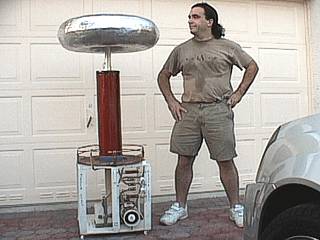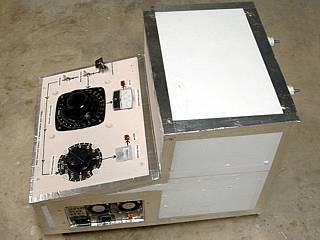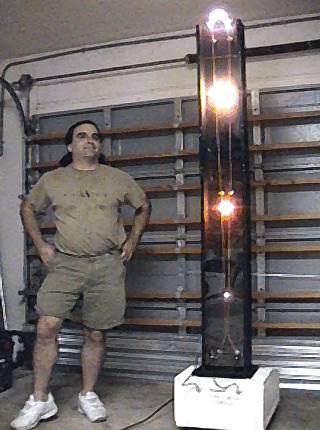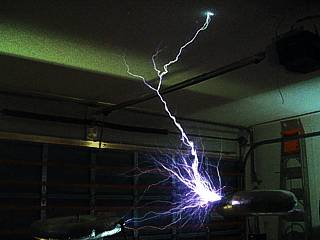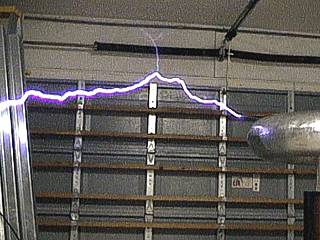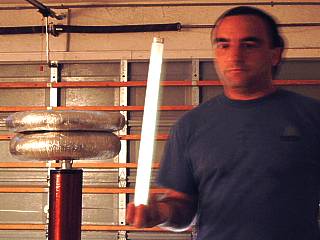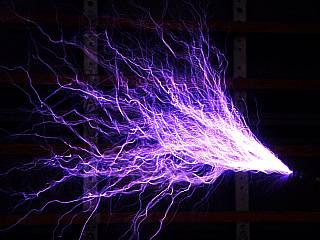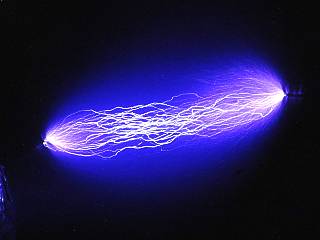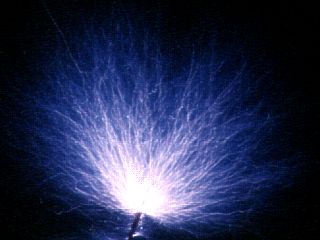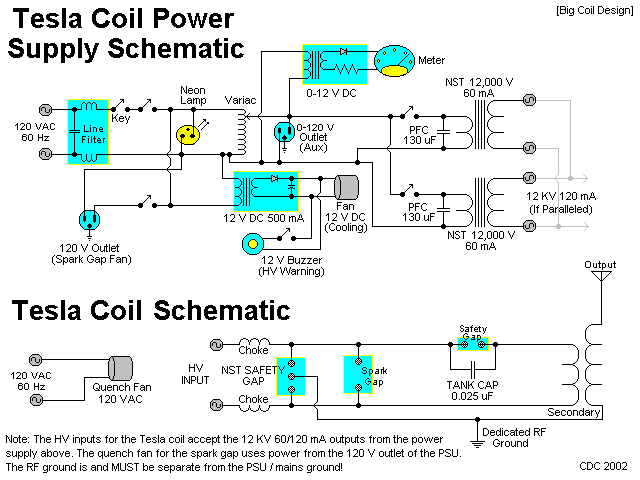Dan Robinson
A distant CG in the sandhills of Nebraska?

Not distant at all - it's 4 inches tall and only 3 feet from the camera. This is a DA strike (dome-to-arm) from a Van De Graaff generator - arguably, for a lightning enthusiast, the greatest machine ever built!
A search on eBay last week found this generator and one of its relatives, the Wimshurst machine, available for less than $200 total. I quickly swiped both of them, and they arrived this week. I have to say that both of these machines, well, *rock*!
The Van De Graaff machine is an older model likely at least 40 years old, but it works like a champ. Only 17 inches tall and amazingly simple in construction (motor, rollers, a belt, 6.5" aluminum dome, braided wire charge sprayers and an inline lamp switch) this machine cranks out some serious discharges! I can't imagine having a large generator to mess around with after seeing what this small one can do.
When you first turn the unit on, it instantly comes to life with long, dim and extensively branched sparks jumping 8 inches from the dome to the base, *twice* every second.

Mini anvil crawler.

This Van De Graaff machine will produce long, intense, bright and extensively branched 3" to 4" sparks to your hands and arms at rates as frequent as once per second. Dimmer and longer upward-branching sparks pop off the dome intermittently. Most of the VDG's sparks don't hurt, though you can definately feel them. A few of the brighter, longer ones will give you a good jolt. (click thumbnails to enlarge)







Here is a 5.8MB WMV video clip of the Van De Graaff generator in operation:
http://wvlightning.com/2006/vdg1.wmv
(WMV interlacing issues are hiding half of the sparks)
The second electrostatic machine I bought, the Wimshurst, is of a more complex (and much older) design. Its basic operating principle is separating charge by passing foil-plated discs spinning in opposing directions close together, then using wire pickups to transfer the charge to two leyden jars. This model uses a hand crank. Due to the increased capacitance from the leyden jars, the Wimshurst's sparks are very intense.



The sparks from this machine are only 3 inches maximum, but they are bright and sometimes branched. Spinning the discs very fast will yield vivid 3-inch sparks up to five times per second. Unlike the VDG, the Wimshurst machine's sparks are quite painful.








Here is a 2.6MB WMV video clip of the Wimshurst machine in operation:
http://wvlightning.com/2006/wimshurst1.wmv
SAFETY NOTE: Unlike these electrostatic machines, sparks from Tesla coils are NOT safe for a person come into direct contact with. The above machines produce short-duration sparks. The Tesla coil produces a continuous arc that can come into contact with live household power and electrocute the person in direct contact with the coil's arc.

Not distant at all - it's 4 inches tall and only 3 feet from the camera. This is a DA strike (dome-to-arm) from a Van De Graaff generator - arguably, for a lightning enthusiast, the greatest machine ever built!
A search on eBay last week found this generator and one of its relatives, the Wimshurst machine, available for less than $200 total. I quickly swiped both of them, and they arrived this week. I have to say that both of these machines, well, *rock*!
The Van De Graaff machine is an older model likely at least 40 years old, but it works like a champ. Only 17 inches tall and amazingly simple in construction (motor, rollers, a belt, 6.5" aluminum dome, braided wire charge sprayers and an inline lamp switch) this machine cranks out some serious discharges! I can't imagine having a large generator to mess around with after seeing what this small one can do.
When you first turn the unit on, it instantly comes to life with long, dim and extensively branched sparks jumping 8 inches from the dome to the base, *twice* every second.

Mini anvil crawler.

This Van De Graaff machine will produce long, intense, bright and extensively branched 3" to 4" sparks to your hands and arms at rates as frequent as once per second. Dimmer and longer upward-branching sparks pop off the dome intermittently. Most of the VDG's sparks don't hurt, though you can definately feel them. A few of the brighter, longer ones will give you a good jolt. (click thumbnails to enlarge)







Here is a 5.8MB WMV video clip of the Van De Graaff generator in operation:
http://wvlightning.com/2006/vdg1.wmv
(WMV interlacing issues are hiding half of the sparks)
The second electrostatic machine I bought, the Wimshurst, is of a more complex (and much older) design. Its basic operating principle is separating charge by passing foil-plated discs spinning in opposing directions close together, then using wire pickups to transfer the charge to two leyden jars. This model uses a hand crank. Due to the increased capacitance from the leyden jars, the Wimshurst's sparks are very intense.



The sparks from this machine are only 3 inches maximum, but they are bright and sometimes branched. Spinning the discs very fast will yield vivid 3-inch sparks up to five times per second. Unlike the VDG, the Wimshurst machine's sparks are quite painful.








Here is a 2.6MB WMV video clip of the Wimshurst machine in operation:
http://wvlightning.com/2006/wimshurst1.wmv
SAFETY NOTE: Unlike these electrostatic machines, sparks from Tesla coils are NOT safe for a person come into direct contact with. The above machines produce short-duration sparks. The Tesla coil produces a continuous arc that can come into contact with live household power and electrocute the person in direct contact with the coil's arc.

